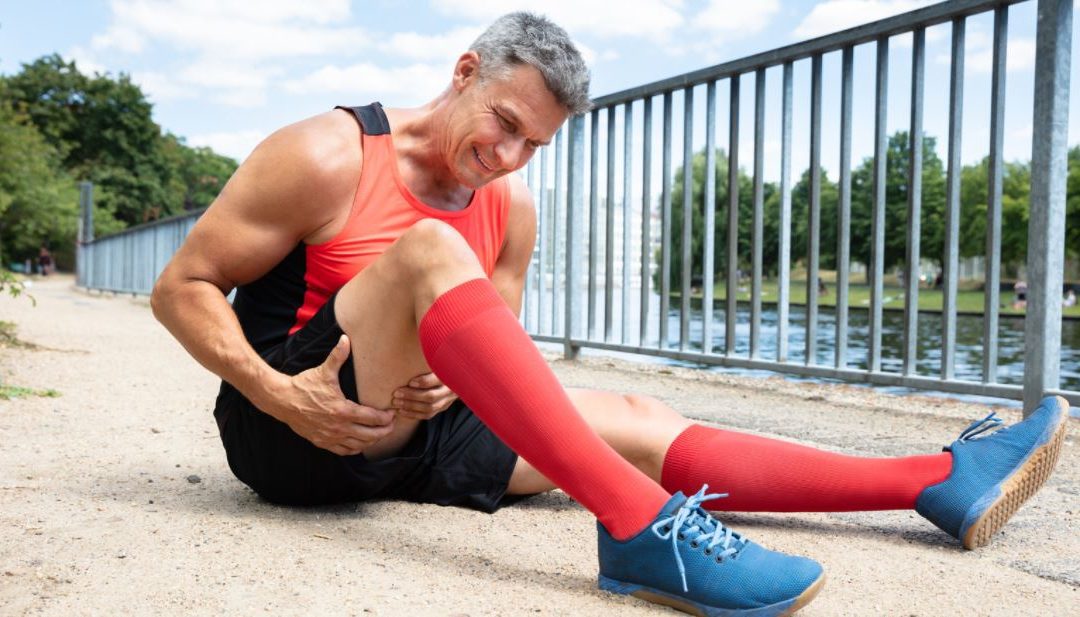Muscle tears are characterized by failure of the muscle to withstand force leading to tearing of muscle fibers coupled with an inflammatory response. The recovery process involves the production of scar tissue and eventual remodeling/maturation of muscle fibers.
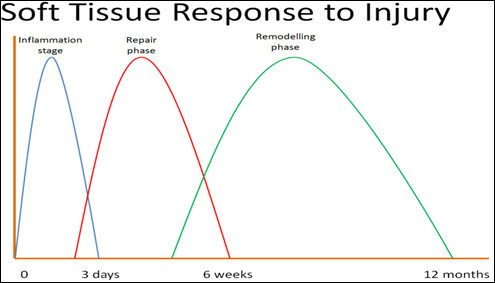
When this natural healing process is combined with functional exercise-based rehabilitation, healing is optimized. Features of a torn hamstring include traumatic or sudden onset, weakness, reduced flexibility, focal tenderness and often bruising.
While severe tears can be disabling, low level strains also require assessment and treatment as they can limit activity and increase the risk of a high-grade tear. Physiotherapists are best placed to diagnose and classify a tear and are experts in providing rehabilitation leading to a safe return to life and sport. This is really important as untreated low-grade tears often develop into more severe tears following an early return to activity.
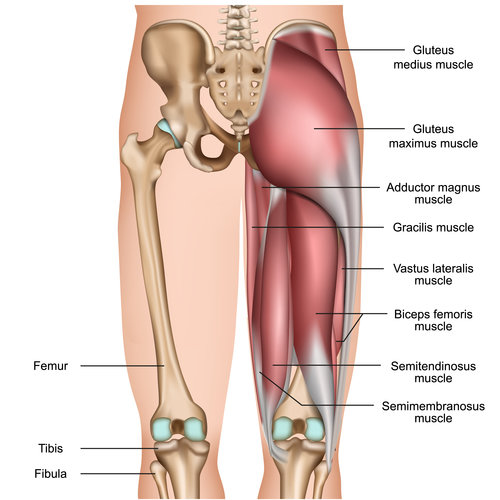
How are symptoms described?
Firstly, type 1 hamstring strains are more common and occur during high-speed running, often resulting in a biceps femoris injury. The increased demands at the terminal swing phase of sprinting requires the hamstring to be highly activated as it works eccentrically to decelerate the swinging leg in preparation for foot strike.
The less common type 2 injuries occur during extensive lengthening of the hamstrings into hip flexion at variable speeds (e.g., Kicking, ballet, gymnastics). This overstretching injury typically involves semimembranosus muscle and requires extended rehabilitation.
The 3rd mechanism of a hamstring tear involves the high-power propulsion stage of acceleration. The combination of active hamstring contraction with trunk flexion (leaning forward) that occurs during acceleration generates a high workload of the hamstring into a lengthened position that leads to muscle failure.
Risk Factors
• Previous hamstring injury particularly within the past 8 weeks
• Previous knee injury or pubic bone stress
• Kicking sports e.g. AFL, soccer, ballet
• Age (AFL players > 23 years of age – Orchard et al., 2013)
• Reduced hip range of motion and hamstring muscle length (SLR)
• Muscle fatigue (80% of injuries occur towards the end of a match)
• Poor Muscle activation patterns or weakness (weak core and/or gluteal muscles)
Diagnosis & Examination
A diagnosis can be formed based on the following:
• A full history of the presenting symptoms – often people will describe a sudden, sharp pain in the back of their thigh. They might also feel a “popping” or tearing sensation, a twinge or a grab when their hamstring “goes”
• Observation for asymmetry in muscle bulk between limbs
• Tenderness, swelling, bruising, warmth and pain on palpation of a hamstring muscle – in more severe injuries, there may be a lump or a gap in the muscle bulk, which can indicate a higher-grade tear
• Assessment of walking and running deficits
• Increased hamstring tension and pain or increased discomfort when the muscle is stretched
• Decreased knee extension range of movement and hip flexion range when the leg is straight
• Pain on specific muscle testing (Resisted hip extension & knee flexion)
Your physiotherapist will screen for muscle strength and endurance in other relevant muscle groups to determine any biomechanical deficits associated with the injury as we know that these tears are a result of poor kinetic chain muscle activation.
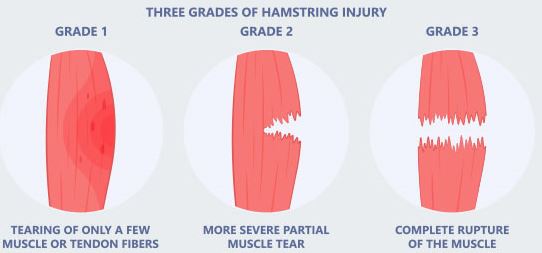
Differential Diagnosis
There are other sources of posterior thigh pain that can present similarly to hamstring strains and should be considered and cleared during the examination process.
Adductor strains, hamstring avulsion injuries, lumbosacral referred pain, piriformis syndrome, SIJ dysfunction, sciatica, hamstring tendinitis and ischial bursitis are conditions that can cause posterior thigh pain. Our physiotherapists will use specific tests and imaging to assess and exclude these other pathologies.
How does physiotherapy help?
As with any musculoskeletal injury, prevention is far superior to treatment, and physiotherapy is heavily involved in both phases. A pre-season screening can highlight any strength or length impairments or imbalances in the hamstring muscle group/kinetic chain through specific testing. This screening can also assess biomechanical factors including weakness in other muscle groups that may lead to increased loading through and eventual failure of the hamstring muscles. Once assessed our physiotherapists can then implement an appropriate exercise program and running/sprint program focused on injury prevention.
Once a hamstring tear does occur (regardless of the severity), early physiotherapy is crucial to achieve an optimal outcome and safe return to pre-injury function. Our staff will assess the severity of the hamstring injury, implement acute management strategies to help minimise pain and get you walking normally again and recommend an appropriate treatment plan based on the patient’s goals and the extent of the damage. Treatment will focus on facilitating muscle healing through manual therapy and include the prescription of a progressive exercise program including eccentric, concentric and neuromuscular strengthening, stretches, and sport based functional exercises. An end stage running program will be included to ensure graduated return to sports involving agility, prolonged running, and a graduated sprinting program. Any biomechanical deficits will also be addressed prior to return to sport or specific high-level tasks. A safe discharge and full recovery are based on objective measures to ensure that muscle strength imbalances, technique and biomechanics are corrected to reduce the likelihood of re-injury. We use our AxIT dynamometers in clinic to assess strength and muscle endurance to ensure that these imbalances are addressed.
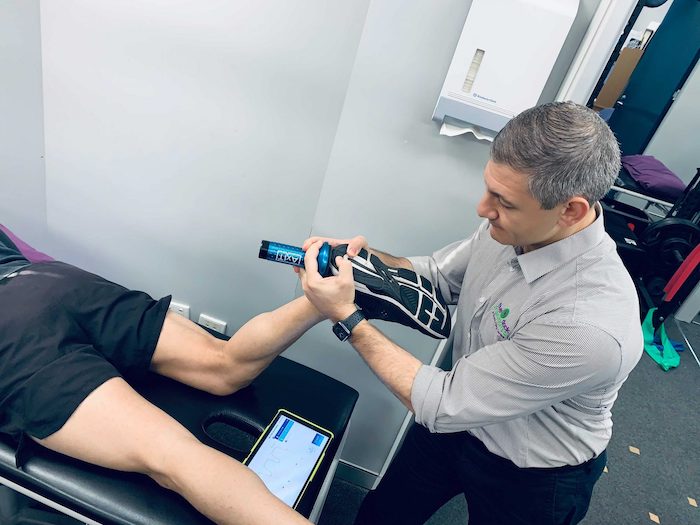
Treatment and Evidence
Hamstring tears have a high recurrence rate with Heirderscheit et al. (2010) finding that almost a third of hamstring tears recur within the first year of returning to sport, often with an increase in severity of the tear. For this reason, a comprehensive, evidence-based rehabilitation program is essential to return to sport safely and prevent recurrence. Askling et al. (2014) showed rehabilitation programs that incorporate eccentric exercises improve both return to sport time and recurrence rate. Sidler et al. (2013) also demonstrated that protocols incorporating agility, trunk stability, progressive running and eccentric strengthening resulted in earlier return to sport and lower re-injury rates.
A physiotherapist is best positioned to evaluate criteria for return to sport with pain on palpation (De Vos et al. 2014), strength deficits of greater than 5% (Malliaropoulos et al. 2011), insecurity with the active hamstring test (Askling et al. 2013) and poor single leg bridge test (Freckleton et al. 2014) all predicting that the individual is not yet safe to return to sport. Various injury characteristics can be used to predict recovery with high pain levels, bruising, proximal location, longer time to walk test and decreased passive extension ROM predicting greater than 40 days to return to sport (Erickson et al, 2017).
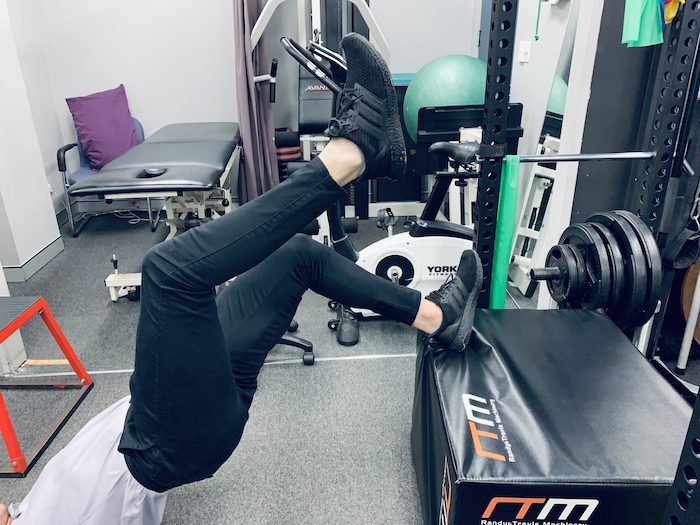
Conclusion
Hamstring injury is the biggest contributor to time lost from competition in high-speed running activities (Hickey et al. 2017). Timely assessment, diagnosis and management of these injuries results in positive patient outcomes so early presentation to the clinic and commencement of rehabilitation is vital. When developing a rehabilitation plan, we take into consideration occupation, school/study and family life, leisure activities and sporting goals.
The rehabilitation program will address any identified biomechanical deficits in conjunction with progressive loading of the hamstring to reach the patient’s goals. This kinetic chain approach helps to optimise recovery and reduce the likelihood of re-injury to both the hamstring and other lower limb structures (hip/knee/ankle pathologies). Our physiotherapists base clearance to play on the achievement of objective, sports-specific movements and data using our AxIT technology to get muscle strength and endurance measures, helping to reduce the chance of recurrent injuries.
If you unfortunately manage to tear your hamstring, please present to our team or your local physiotherapist early (within a couple of days) to commence rehab so we can help you recover swiftly and achieve fantastic results.
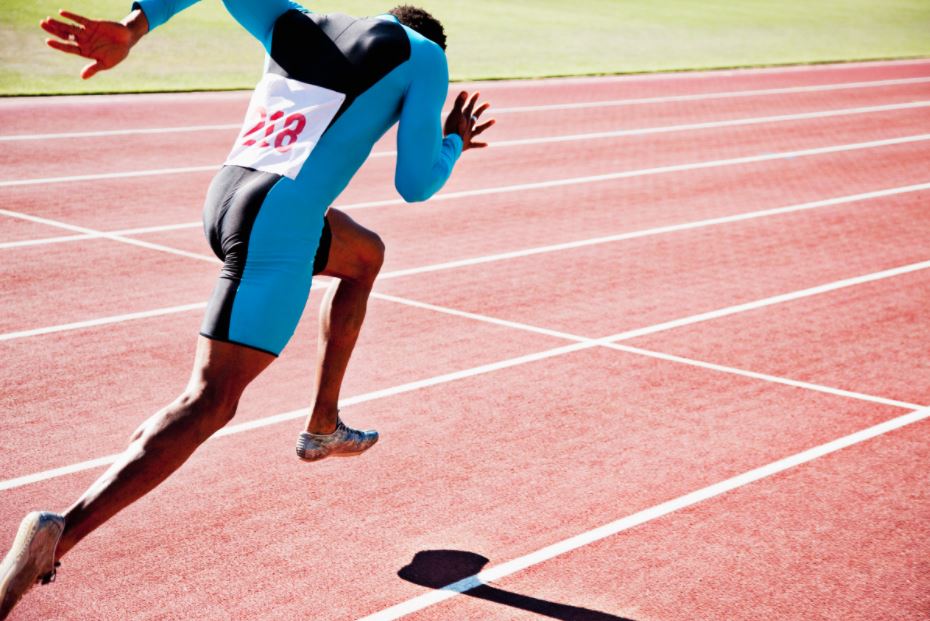
HAVE YOU INJURED YOUR HAMSTRING AND NEED SOME HELP?
GET AN ASSESSMENT & TREATMENT WITH OUR AMAZING PHYSIO TEAM.
• Understand how bad your injury is and how long your recovery might be
• Understand what activities you can do without delaying recovery and suffering consequences
• Find out what simple yet essential exercises can help you get amazing results
• Leave the session with the confidence of knowing exactly what to do to get symptom free and back to sport and living life without pain

